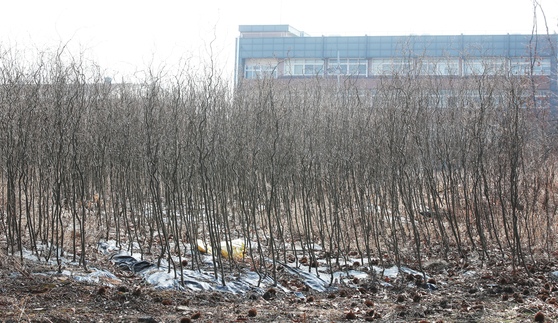
Seedlings are densely planted on a land in Mujinae-dong, Siheung-si, Gyeonggi-do, where some LH employees are suspicious of speculation in the new cities of Gwangmyeong and Siheung. yunhap news
“I think it’s a land speculation aimed at the reward of someone who understands the practice very well.” Mr. A, an appraiser in the 15th year, recently spoke of allegations of land speculation in the Gwangmyeong and Siheung new cities of Gyeonggi Province by LH (Korea Land and Housing Corporation) employees. Mr. A added, “It is not possible to be so bold unless you are a person who has penetrated the compensation work in the development area from one to ten,” he added.
Some of the land in Siheung City, which is suspicious of speculation, was planted with a rare species of willow. Wang Willow is an unfamiliar species enough to say, “I’ve been doing this for 30 years, and I’ve never handled it,” even a representative of a landscape architect with 30 years of experience.
LH employee K, who purchased the land in Mujinae-dong, Siheung-si in 2018, plowed the cabbage field and planted willows. According to landscapers, one week per pyeong (3.3㎡) is adequate to properly grow willows. However, in the land owned by Mr. K, about 25 trees (180-190 cm tall) were planted densely in 1㎡ of land. In light of this, suspicion was raised that Mr. K would have intentionally planted willows for compensation. Mr. K is an executive who has worked for land compensation at LH for a long time.
An official of a landscape architecture company said, referring to Mr. K’s case, “I chose a rare number of attributes that are difficult to catch even if the rewarding person and the rewarded person squeeze it out.” Regarding this point, LH refuted, “Even if it is planted densely to prevent speculation, it is compensated based on normal planting, and rare species cannot receive more compensation.” However, Gampyeongsa A said that LH’s objection did not fit the reality.

A view of the entire farmland in Mujinae-dong, Siheung-si, Gyeonggi-do, bought by LH employees. News 1
When compensation is initiated, an investigation into the obstacles such as buildings and trees on the land is conducted first. In the case of trees, this is a procedure in which a professional investigator grasps what kind of trees are and how many trees are planted in the presence of the land owner. Based on this, multiple appraisers go to the field and price the obstacles. As in the case of Mr. K, if more than 1,000 trees are densely planted in a parcel, gampyeongsas will have difficulty in evaluating them.
Mr. A said, “If more than 1000 trees are planted, the number cannot be counted individually due to time constraints. In addition, if there is a difference between the number of obstacles and the time of investigation, the procedure to correct and re-evaluate it is complicated.” As there is a backlash against the procedure, it is common practice to evaluate it according to the opinion of the owner,” he explained.
In the case of rare species, emotions are the same. Mr. A said, “We have no choice but to rely on an appraiser specialized in landscaping for rare tree species, but most of them are left to general appraisers for problems such as cost and procedure. It is more difficult to evaluate,” he said.
“There is no evidence left because the obstruction is demolished after evaluation. Even if a problem arises later, there is no evidence to prove it. Even if the quantity is overcalculated and becomes a problem, we can pass the responsibility to the obstruction investigation company,” he said. Mr. K is a person who knows this reality too well.”
Reporter Kim Won [email protected]
![]()
